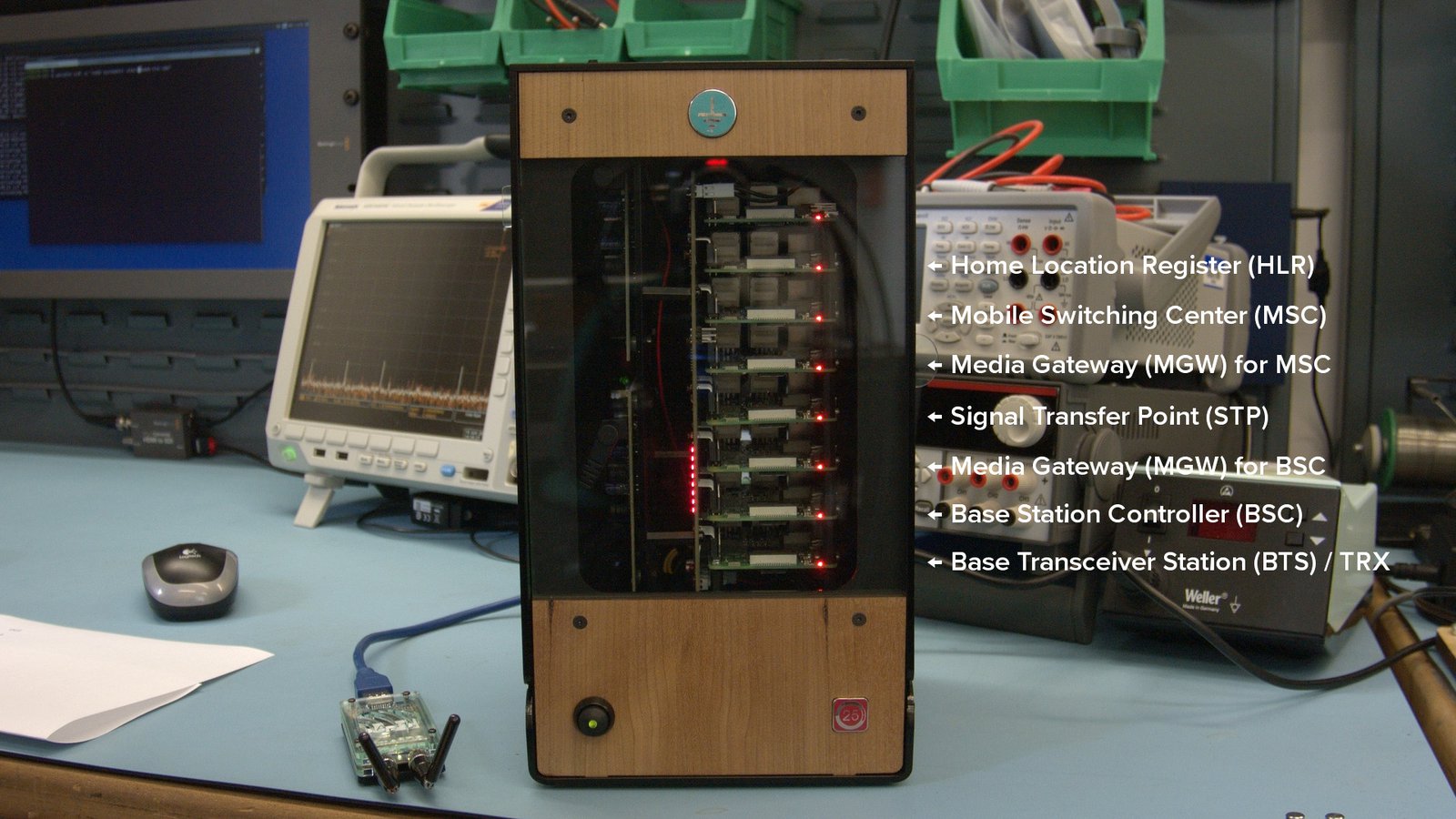Project update 12 of 13
Running a GSM Network with a LimeSDR Mini
In this latest video demo, we take a look at how you can run a complete GSM network on a Circumference 25, with a base station (BTS) running on one compute node and a base station controller (BSC) on another — plus two media gateways, a signal transfer point (SS7 network router), mobile switching center (MSC) and a home location register (HLR), each all running on dedicated hosts.
While it would be possible to run all of these components on a single compute node, what Circumference allows us to do is to get a much better experience of a distributed cellular network architecture. In this case GSM, with the Abis protocol being used between the BTS and BSC, SS7 signalling between BSC and MSC, and RTP voice traffic streams, etc. Software control of power sequencing allowing us to then test behaviour when nodes or an Ethernet network switch fails.
Of course, there are many different ways you can configure the Osmocom Cellular Network Infrastructure, and by running multiple components on one compute node, with the aid of additional LimeSDR Mini boards, it would also be possible to test multi-BTS and multi-BSC configurations with handover, for example. In short, what we have is a lab environment that can be used to learn about mobile network infrastructure, and be used in application development and testing etc.
Andrew and the Circumference Team

